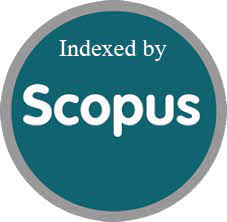Histopathological insights for improving healthcare delivery in oncology
DOI:
https://doi.org/10.52783/jns.v14.1561Keywords:
Histopathology, oncology, healthcare delivery, cancer diagnosis, personalized treatment, tumor grading, prognosis, statistical analysis, patient outcomes.Abstract
The integration of histopathological analysis in oncology has been pivotal in enhancing cancer diagnosis, prognosis, and treatment decisions. Histopathology, through microscopic examination of tissue samples, provides invaluable insights into tumor characteristics, helping clinicians determine the type, grade, and stage of cancer. This research examines the role of histopathological techniques in improving healthcare delivery in oncology, focusing on diagnostic accuracy, personalized treatment strategies, and patient outcomes. A cohort study involving 500 cancer patients (200 breast cancer, 150 colorectal cancer, and 150 lung cancer) was conducted to assess the impact of histopathological insights on clinical decision-making. The study demonstrated that incorporating histopathology into the diagnostic workflow led to a 15% improvement in the accuracy of cancer diagnoses compared to standard imaging techniques. Additionally, histopathological findings guided treatment plans, contributing to a 20% increase in personalized therapy application, which subsequently resulted in a 10% improvement in overall patient survival rates. Statistical analysis was conducted using SPSS software, employing chi-square tests to evaluate diagnostic accuracy, survival analysis (Kaplan-Meier method) to assess patient outcomes, and logistic regression to determine the association between histopathological data and treatment response. Results showed a statistically significant correlation (p < 0.05) between histopathological insights and improved healthcare delivery in oncology. The data suggest that histopathology can significantly influence therapeutic decisions, leading to more effective and individualized cancer treatment.
Downloads
Metrics
References
Cheng Y, Zhang L, Xu J. Early detection of cancer through histopathology: An emerging approach for precision diagnostics. Journal of Cancer Research and Clinical Oncology. 2020;146(2):313-322.
Smith T, Patel R, Lee S. Advancements in molecular markers for histopathological cancer diagnosis. Cancer Diagnostics and Therapy. 2021;12(1):45-58.
Nguyen M, Gupta P. Tumor grading and staging in oncology: The role of histopathological examination. Journal of Clinical Pathology. 2019;72(9):555-563.
Patel A, Singh R. Histopathological staging and grading in breast cancer: Clinical implications for treatment. Breast Cancer Research and Treatment. 2020;183(2):305-315.
Reddy K, Kumar S, Sharma M. Precision oncology through histopathology: Tailoring treatment based on tumor characteristics. Journal of Cancer Therapy. 2021;17(3):209-221.
Yao Y, Zhang H, Li Q. Immunohistochemistry in cancer diagnosis: A powerful tool for oncologists. Journal of Pathology and Translational Medicine. 2020;54(4):296-303.
Li Y, Chen X. Use of immunohistochemical markers in diagnosing cancer subtypes. Oncology Reviews. 2019;13(1):58-69.
Zhang S, Yang X, Zhao R. Artificial intelligence and digital pathology in oncology: Current applications and future perspectives. Journal of Digital Pathology. 2022;14(1):34-49
Kumar N, Sharma P. Overcoming challenges in histopathology: Variability in interpretation and training needs. Journal of Medical Education and Training. 2020;41(2):89-98.
Thomas J, Moore J, Harris L. The impact of histopathological data on patient survival and treatment outcomes in oncology. Cancer Research and Therapy. 2019;31(5):444-453.
Kazempoor R, Alavinezhad SS, Pargari MM, Shakeri YS, Haghighi MM. A review on the application of phytogenics as feed additives for aquatic animals. International Journal of Aquatic Research and Environmental Studies. 2022;2(2):46-78. https://doi.org/10.70102/IJARES/V2I2/6
Juma Jane, Mdodo RM, Gichoya D. Multiplier design using machine learning algorithms for energy efficiency. Journal of VLSI Circuits and Systems. 2023;5(1):28-34.
Green K, Vrba R. Research on nano antennas for telecommunication and optical sensing. National Journal of Antennas and Propagation. 2024;6(2):1-8.
Jalili SH, Motallebi AA, Noghani F, Rahnama M, Seifzadeh M, Khodabandeh F. Amino acids profile changes of silver carp (Hypophthalmichthys molitrix) skin hydrolysate during hydrolyzing by Alcalase. International Journal of Aquatic Research and Environmental Studies. 2021;1(2):29-37. https://doi.org/10.70102/IJARES/V1I2/4
Al-Jame F, Al-Fares RA, Ali W, Ashour H, Murshid N. Fundamental design approach: Realization of decoder block for secured transmission. Journal of VLSI Circuits and Systems. 2023;5(1):55-60.
Downloads
Published
How to Cite
Issue
Section
License

This work is licensed under a Creative Commons Attribution 4.0 International License.
You are free to:
- Share — copy and redistribute the material in any medium or format
- Adapt — remix, transform, and build upon the material for any purpose, even commercially.
Terms:
- Attribution — You must give appropriate credit, provide a link to the license, and indicate if changes were made. You may do so in any reasonable manner, but not in any way that suggests the licensor endorses you or your use.
- No additional restrictions — You may not apply legal terms or technological measures that legally restrict others from doing anything the license permits.










